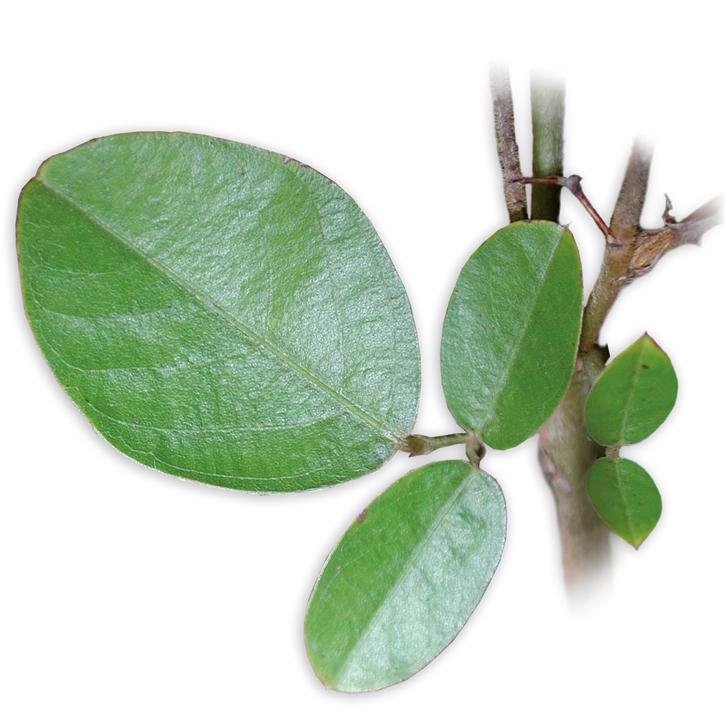Description
Perennial, herbaceous plant with more or less postrate branches, smooth, with vestiture in two strata, whitish or yellow hairs, up to 1 mm long, ascending, variable in density in the same plant; besides barb, very dense to scraggy tiny hairs and lifted extremities. Alternate leaves formed by 3 small leaflets (trifoliolates), petiolate and stipulate. Stipules of 3.5-6 mm long, triangular, very sharp, slightly auriculate in the inner edge, striate, ciliate, united to the foliar base. Inflorescence in terminal bunches, peduncles of up to 5-10 mm long, with barbe hairs. Flowers 4.5 mm long. Calyx 2.5 mm long, campaniform, tube of 1 mm long with 5 triangular, very sharp teeth, 1.5 mm long, all with barbe and common adpressed hairs. Violet, unguiculate petals. Vexillum, 4.5 mm long, rounded, notched, short claw. Wings 4 mm long by 1.5 mm wide, oblong, asymmetrical, claw 1 mm long. Keel 4.5 mm long by 1.5 mm wide. Fruit of 1-4 joints, straight, thick upper edge, sinuous in the under edge, rounded joints of 4-5.5 mm long by 2.5-3 mm wide with abundant barbe, brown hairs when ripe. It belongs to the Leguminosae family (Papiloneceae).
This plant grows in a wild state in Africa and Brazil, in wide forest, pastureland, and along the roadside edge. This plant develops as parasite, especially in shrubs and palms. It is harvested after blooming.
It’s been used since ancient times in Africa to fight jaundice. It’s used to feed cattle, especially horses and goats.
Part used
The non-flowered aerial part (stems and leaves).
Indications
Internal use
- Viral and toxic hepatitis.
- Liver damage due to alcohol abuse.
- Liver damage due to chemotherapy.
- Prevention and treatment of asthmatic processes.
- Constipation and headache of hepatic origin.
- Digestive alterations: show digestions, epigastric swelling, burps, flatulence.
- Stomach ulcers: soak desmodium leaves in water for 20 minutes and drink afterwards.
- Cough and cold.
- Certain infectious processes: herpes circinatus, blennorrhea.
- The sooner the treatment is prescribed, the faster and permanent will be its effects.
External use
- In case of lesions: soak desmodium leaves in lemon juice for 15 minutes and apply in a poultice form on top of the wound. It can also be used in bathes.
- In case of convulsion: use it in bathes.
Bibliography
Berdonces I Serra. (2001). Gran enciclopedia de las plantas medicinales.Tikal. Madrid.
Addy ME. “Some secondary plant metabolites in Desmodium adscendens and their effects on arachidonic acid metabolism”. Prostaglandins Leukot Essent Fatty Acids 1992 Sep;47(1):85-91.
N´gouemo P, Baldy-Moulinier M, Nguemby-Bina C. “Effects of an ethanolic extract of Desmodium adscendens on central nervous system in rodents”. J Ethnopharmacol 1996 Jun;52(2):77-83.
Addy ME, Burka JF. “ Effect of Desmodium adscendens fraction 3 on contractions of respiratory smooth muscle”. J Ethnopharmacol 1990 Jul; 29(3):325-35.
Addy ME, Burka JF. “ Effect of Desmodium adscendens fraction on antigen and arachidonic acid-induced contractions of guinea pig airwais”. Can J Physiol Pharmacol 1998 Jun;66(6):820-5.
Addy ME, Dzandu WK. “Dose-response effects of Desmodium adscendens aqueous extract on histamine response, content and anaphylactic reactons in the guinea pig”.J Ethnopharmacol 1986 Oct;18(1):13-20.
Addy ME, Awumey EM. “ Effects of the extracts of Desmodium adscendens on anaphylaxis”. J Ethnopharmacol 1984 Aug;11(3):283-92.
